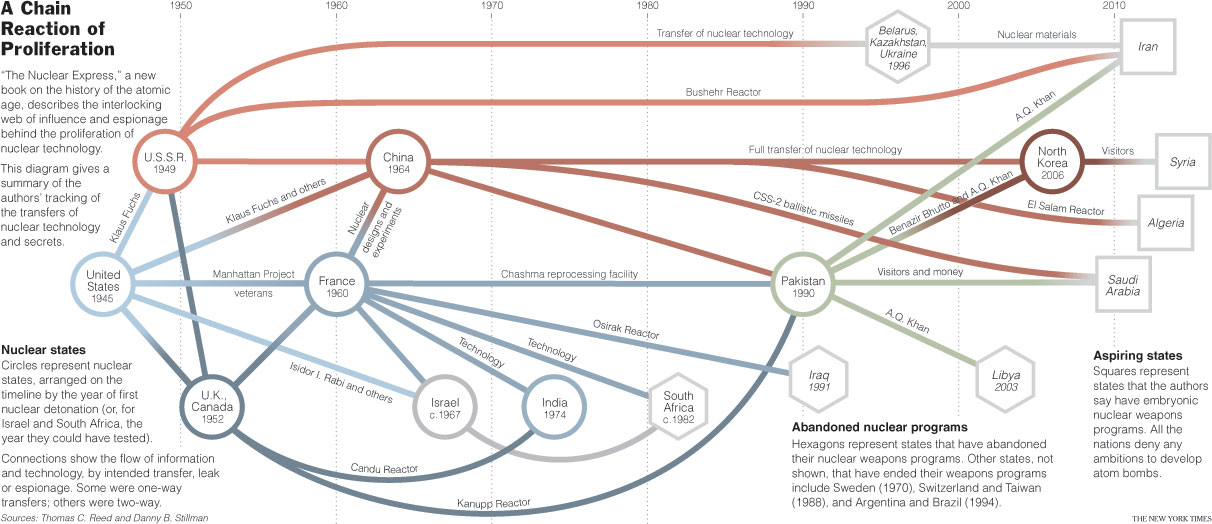
A recent New York Times article on the invention and dissemination of atomic weapons included the infographic above on the travels of the atomic bomb. The article references some new works on the history of the bomb, noting that it was only invented once:
All paths stem from the United States, directly or indirectly. One began with Russian spies that deeply penetrated the Manhattan Project. Stalin was so enamored of the intelligence haul, Mr. Reed and Mr. Stillman note, that his first atom bomb was an exact replica of the weapon the United States had dropped on Nagasaki.
Moscow freely shared its atomic thefts with Mao Zedong, China’s leader. The book [Robert S. Norris’s Racing for the Bomb] says that Klaus Fuchs, a Soviet spy in the Manhattan Project who was eventually caught and, in 1959, released from jail, did likewise. Upon gaining his freedom, the authors say, Fuchs gave the mastermind of Mao’s weapons program a detailed tutorial on the Nagasaki bomb. A half-decade later, China surprised the world with its first blast.
Recent comments
2 years 29 weeks ago
2 years 44 weeks ago
2 years 44 weeks ago
2 years 50 weeks ago
3 years 4 weeks ago
3 years 4 weeks ago
3 years 4 weeks ago
3 years 6 weeks ago
3 years 6 weeks ago
3 years 6 weeks ago